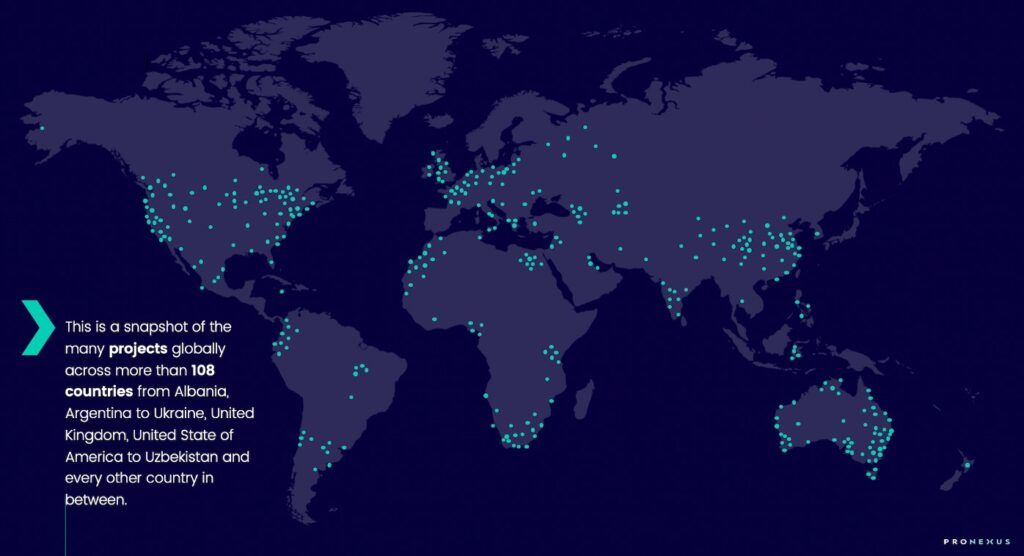Closing the Gap: Labour, Talent, and the Energy Transition
The Project Management Skills Gap
Global and Local Perspectives (2025)
Since 2020, businesses worldwide have faced disruption and transformation at a pace never seen before. What started as crisis response has become structural change—digital transformation, energy transition, sovereign capability programs, and new models of work.
Globally, the story is clear: the demand for project professionals is outstripping supply. Today there are nearly 40 million project professionals worldwide, and by 2035 that number could need to reach 65 million. Even under conservative forecasts, the world faces a shortfall of up to 30 million people in project management–related roles. Sectors like construction, technology, professional services, and manufacturing are projected to experience the largest gaps.
Labour Market Dynamics – A Closer Look
At a national level, the labour market remains tight. As of July 2025, the Australian unemployment rate stood at 4.2% in trend terms — a figure that masks wide sectoral and geographic disparities.
Technology is shedding people, but this appears cyclical a “realignment” more than a structural surplus.
Energy and Infrastructure sectors are struggling to secure enough people, with vacancies sitting in the 85th percentile.
Wage growth is at a 15-year high, but pay alone is not solving shortages when infrastructure, energy, healthcare, and technology are all competing for the same scarce talent.
Structural Constraints
Several systemic factors deepen the gap:
Ageing population → fewer entrants to trades and project roles, more retirements.
Global competition for skilled migration → inflow is constrained, especially for project-critical roles.
Skills shortage classification → rose from 16% (2010–2012) to 18–19% (2020–2021), and now sits at 36%, with trades, healthcare, and tech most affected.
Sectoral Pressures on Delivery
Energy transition projects are constrained by shortages in the electrical trades, compounded by aging demographics, apprentice attrition, and competition from mining. This drives up wages and delays delivery of renewable and grid projects.
Shipbuilding & defence (AUKUS, sovereign programs) face acute shortages, threatening timelines and capability development.
Renewables The renewables and hydrogen sectors are facing regional labour gaps, leading to greater reliance on FIFO/DIDO models. While these approaches can be effective in meeting immediate workforce needs, over time they present challenges—impacting individual wellbeing, workforce retention, and, in some cases, project cost and delivery timelines.
Post-pandemic workforce expectations are clashing with “back to office” mandates, creating tension in project teams where leaders and PMs seek flexibility while clients expect accountability.
Talent as a Commercial Imperative
Our recent CX Survey with the Top 100 clients of a Tier 1 global contractor highlighted a striking shift:
Attraction and retention of talent are seen as critical risks.
Clients are beginning to tie talent stability directly to contractor risk assessments.
Some are reluctant to partner with firms whose workforce pipeline appears unstable—not just at the leadership level, but also at the individual contributor level.
This elevates talent management from an HR issue to a contractual and commercial priority.
The Opportunity
The Project Management Skills Gap is no longer abstract. It is being felt daily in delayed infrastructure, stretched energy projects, stalled innovation pipelines, and heightened client scrutiny.
Organisations that can stabilise their talent pipeline and invest in next-generation skills—from technical delivery to leadership, digital fluency, and stakeholder management—will have a competitive edge.
The gap is both a risk and an opportunity: a challenge for delivery today, but also a chance for firms and professionals to position themselves as indispensable to the transformations that define the next decade

There is more scrutiny on spending and limited scope for greater spending. This means that organisations are taking more care of how, and where they outlay their capital, and they want professionals to deliver their projects.
A few things to think about at the early or concept phase of your project(s) are:
- What talent resources are required?
- Where is this talent
- How long will you need them?
- How long will it take to get these resources?
- What are you doing to manage your current resources?
- Who are your resourcing partners?
What causes the skills shortage?
Just consider the number of projects being invested in, at a local and global level. It is this investment in Projects will continue to drive a significant upsurge in demand for project talent.
Projects change the world, and project management professionals are the change agents.
This is one profession where life is never dull and where demand for skilled practitioners will continue to be high.
Contact Us



